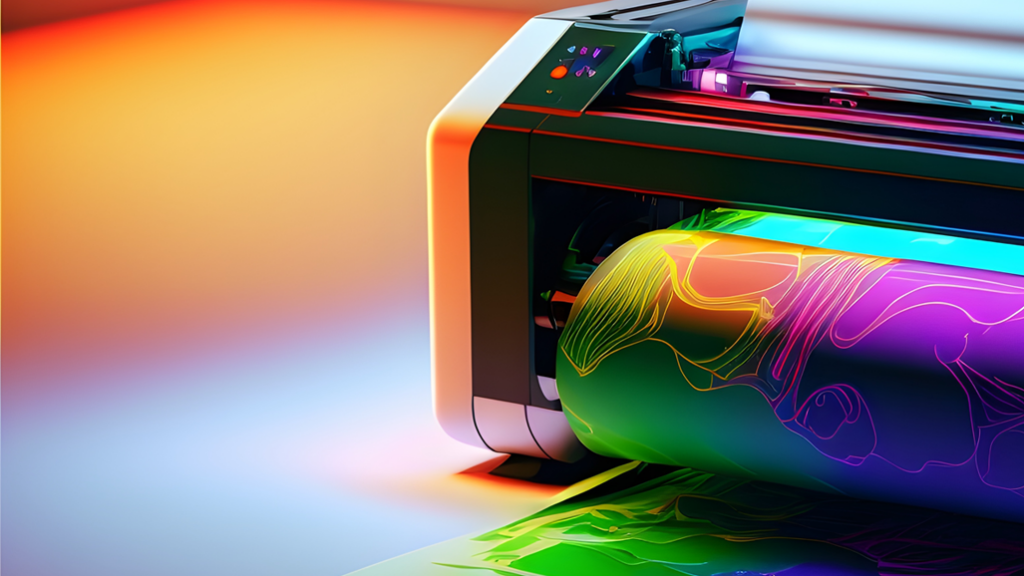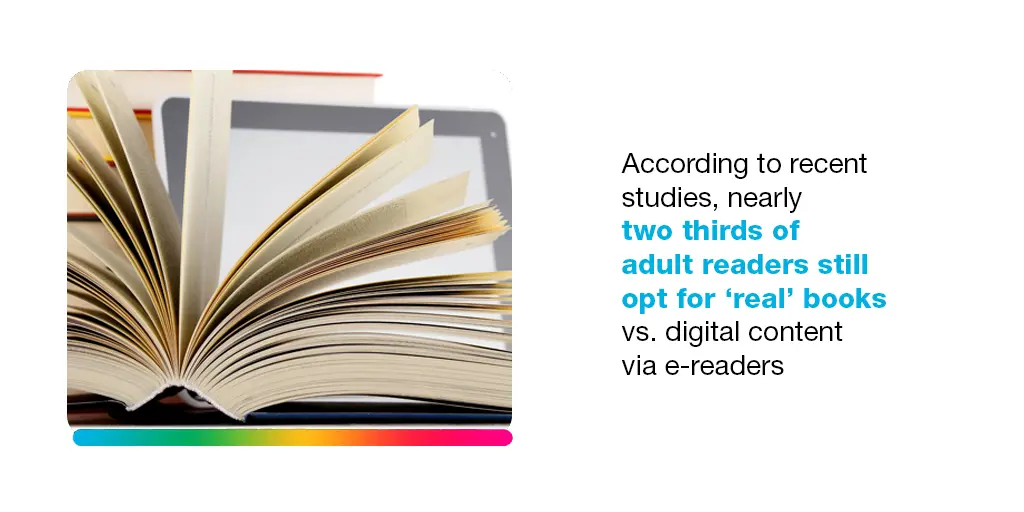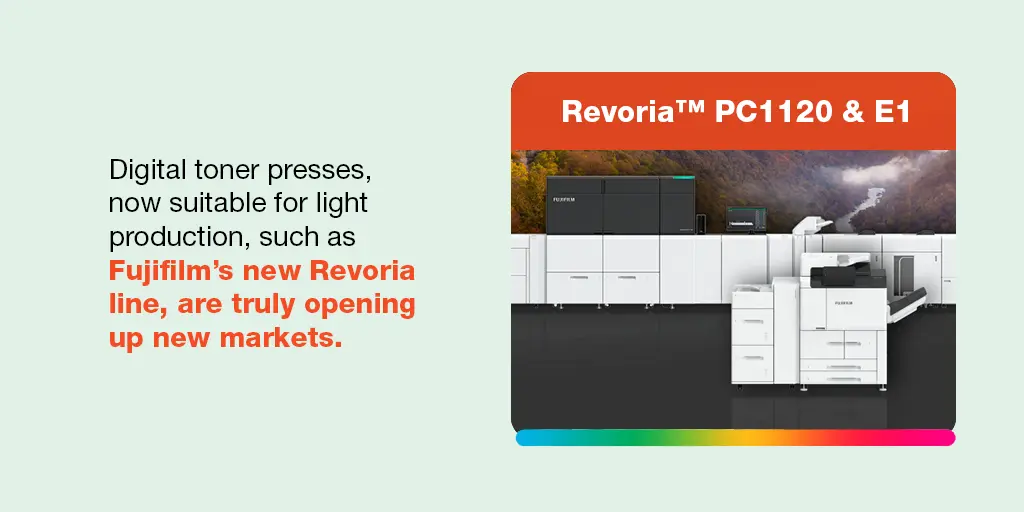
I ended last week’s post by saying that while print is not the high-volume industry it used to be, it has become a far more interesting space. In today’s post, the last in the series, we’ll look at why the world will never go paperless and how print will continue to evolve in new and compelling ways.
Each print segment, of course, is different in terms of its digital conversion rates – from both a printing and consumption perspective. It all depends on the unique value digital adds to the print purchaser and/or end consumer.
Transactional is one category that’s shrinking because big service providers are moving away from paper altogether. Automatic bill pay, as one major driver, adds value to the provider in terms of cash flow and to the consumer in terms of ease-of-use. The way people consume their news has also shifted to digital, due to the value of its immediacy and easy access.
Book printing, however, remains robust. According to recent studies, nearly two thirds of adult readers still opt for ‘real’ books vs. digital content via e-readers. Digital brings the value of convenience and choice, but traditional print still rules the day in terms of overall experience and information retention.

That said, a phenomenal 55% of books sales today are made through Amazon, which purchases a huge amount of digitally printed books. They also digitally print their own books, driving the growth of independent book manufacturers across the U.S. Of the 150 independent producers in America, every single one is doing great right now. Just-in-time delivery and the ability to produce short runs greatly favors digital printing when it comes to online ordering. So, while only 20% of books today are printed digitally, this category is expected to grow.
The advertising segment also holds tremendous potential for digital printing. With email boxes overflowing and people growing numb to online ads, direct mail, for example, continues to deliver a tangible alternative. According to the 2021 Response Rate Report by the Association of National Advertisers (ANA), when coupled with other platforms (such as Personalized URLs) the ROI for direct mail is higher than that of any other marketing channel – significantly. For all these reasons, print is expected to remain a powerful tool in the marketer’s tool kit – with digitally printed pieces garnering greater value at higher prices.
Of course, there are new opportunities across the board from packaging to signage. That’s why it’s so important to have a complete product line/broad portfolio of offerings in today’s world of print. Printers need the versatility of different print technologies to leverage all the growth potential out there.
For those who haven’t yet made the leap, you might want to start at the entry level with a toner machine and work your way to roll-fed. Digital toner presses, now suitable for light production, such as Fujifilm’s new Revoria™ line, are truly opening up new markets. Alongside improved print quality, a Revoria™ PC1120 is a very purchase-able machine with the ability to add things like spot color and varnish on a variety of substrates, which create more value in the finished product, driving higher price.

This works to a certain productivity level. Printers may end up buying a number of toner machines to keep up with volumes, until they eventually jump to an inkjet solution such as the Fujifilm J Press. With the new high-speed J Press, the print quality is there, alongside speed and scalability.
Fuji also leads the pack with its inkjet ink chemistry. Their ability to take pigments and load them at the right dispersion is incredibly important. That’s why they’re a huge supplier of ink to other suppliers. I look at the J Press and I think, “Yes, it’s been on the market for awhile, but it’s been upgraded consistently and IT WORKS!” In fact, I don’t know a single J Press operator who isn’t making money.
So, let’s wrap up by going back to the title of my original presentation: 2023: the year that started the tipping point from conventional to digital printing. Is it really the tipping point for digital printing? Yes and no. We’re still in the early stages of migrating to digital print. Within the forecast period, we see approximately 30% of pages digitally printed by the year 2028. As of today, that number is closer to 5%. The value digital brings might speak louder than the volume it represents for the next five years, so we’re not really ‘tipping’ yet, but we’re starting to lean!
In the meantime, how do you prepare for a true digital transition within our mature industry? Start by taking a really hard look at your true costs. I’ll bet you’ll be surprised by how they’ve shifted – especially for shipping. Understand your margins and how they’re trending. Explore new spaces. Invest in trusted partners. At the end of the day, no matter what you’re producing, how you’re doing it or where you’re participating, printers want customers to say, “This piece of print was worth the investment.”

We look forward to an ongoing collaboration with the North American print market, bringing you the broadest portfolio of products to suit the needs of your business today AND tomorrow!
Contact us for more information: Fujifilm Contact Form